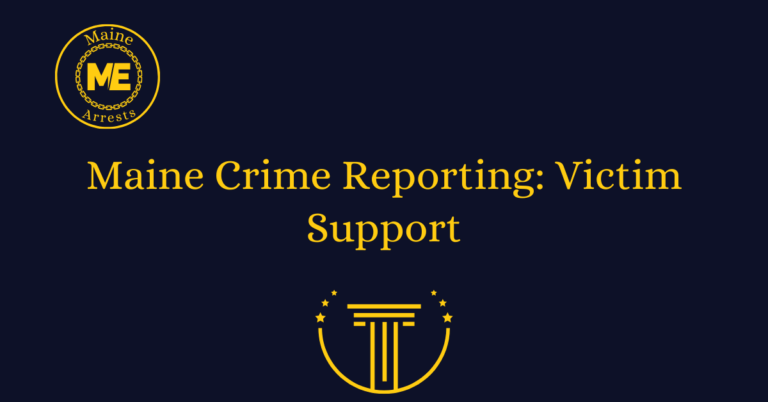Youth Offenses in Maine: Analyzing Trends
Crime rates among youth in Maine have been a topic of concern and interest for many years. As society grapples with understanding the root causes and potential solutions for youth offenses, it becomes increasingly important to analyze the trends and patterns that exist. In this in-depth exploration, we delve into the world of youth offenses in Maine, seeking to shed light on the factors that contribute to these behaviors and the impact they have on our communities.
Through comprehensive research and data analysis, we aim to provide a comprehensive picture of the current state of youth offenses in Maine. By examining the various types of offenses, their frequency, and the demographics of those involved, we can gain valuable insights into the underlying issues at play. Our findings will not only inform policymakers and law enforcement agencies but also educators, parents, and community members who are invested in creating a safer and more supportive environment for our youth.
Understanding the Factors Behind Youth Offenses
Exploring the causes and motivations behind youth offenses is crucial in order to address this issue effectively. By gaining a deeper understanding of the factors that contribute to these behaviors, we can develop targeted interventions and support systems to help at-risk youth.
Socioeconomic Influences
One significant factor that plays a role in youth offenses is socioeconomic status. Research has shown that individuals from disadvantaged backgrounds are more likely to engage in criminal activities. By examining the correlation between poverty, lack of access to education, and involvement in offenses, we can identify strategies to break this cycle.
Family Dynamics and Support Systems
The dynamics within a family and the presence of a supportive environment greatly impact a young person’s likelihood of engaging in criminal behavior. By studying the relationship between family structures, parental involvement, and youth offenses, we can develop programs that strengthen family bonds and provide necessary support networks.
Mental Health and Substance Abuse
Another factor that cannot be overlooked is the influence of mental health issues and substance abuse. Studies have shown a strong connection between untreated mental health conditions, drug use, and involvement in criminal activities. By addressing these underlying issues and providing accessible mental health services, we can help prevent youth offenses.
Peer Pressure and Influence
The influence of peers cannot be underestimated when analyzing youth offenses. Understanding the impact of peer pressure and the desire for acceptance among young individuals is crucial in developing prevention strategies. By creating positive social environments and promoting healthy relationships, we can empower youth to make informed choices.
Education and Youth Empowerment
Education plays a vital role in preventing youth offenses. By examining the correlation between school engagement, access to quality education, and involvement in criminal activities, we can design educational programs that empower youth and provide them with the necessary tools to succeed.
Building Strong Communities
Lastly, the importance of community support and involvement cannot be overstated. By fostering a sense of belonging and implementing community-based initiatives, we can create a supportive environment that discourages youth offenses. Through collaboration among community members, law enforcement agencies, and local organizations, we can work together towards a safer and more inclusive society.
In conclusion, this comprehensive exploration aims to shed light on the factors that contribute to youth offenses in Maine. By understanding these underlying causes, we can develop effective strategies and interventions to prevent and address this issue. It is our collective responsibility to create a nurturing and supportive environment for our youth, ensuring their future success and the well-being of our communities.
FAQs
What are youth offenses?
Youth offenses refer to criminal activities committed by individuals who are under the age of 1 These offenses can range from minor infractions to serious crimes.
What are the trends in youth offenses in Maine?
Currently, there has been a decline in youth offenses in Maine over the past decade. This can be attributed to various factors such as increased community programs, educational initiatives, and early intervention strategies.
What are the most common types of youth offenses in Maine?
The most common types of youth offenses in Maine include theft, vandalism, underage drinking, drug possession, and assault. These offenses often occur due to peer pressure, lack of guidance, or socio-economic factors.
How does the legal system handle youth offenses in Maine?
In Maine, the legal system follows a separate set of rules and procedures for handling youth offenses. The focus is on rehabilitation rather than punishment, with an emphasis on providing support, counseling, and education to help young offenders reintegrate into society.
What resources are available for youth offenders in Maine?
Maine offers a range of resources for youth offenders, including counseling services, educational programs, vocational training, and community-based initiatives. These resources aim to prevent recidivism and provide opportunities for personal growth and development.
How can communities help in reducing youth offenses in Maine?
Communities play a crucial role in reducing youth offenses by promoting positive environments, fostering strong relationships between youth and adults, and supporting programs that address the underlying causes of youth crime. By providing mentorship, guidance, and opportunities, communities can empower young individuals to make positive choices and avoid engaging in criminal activities.







